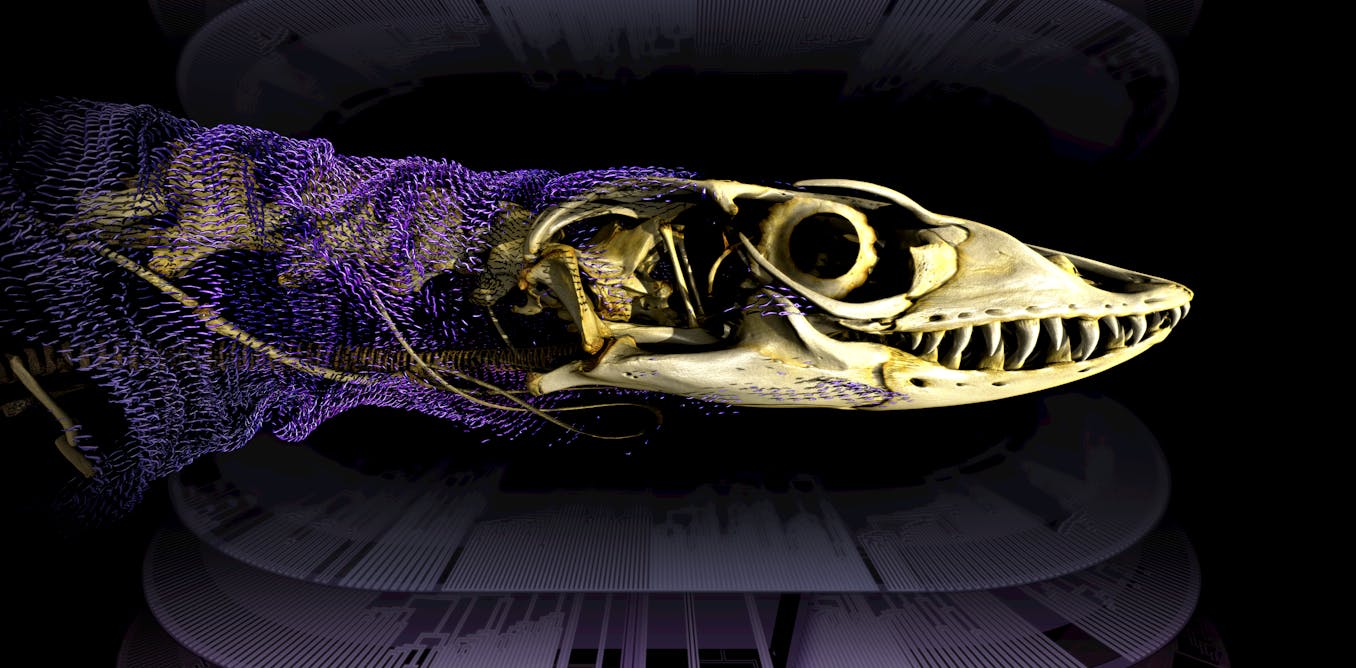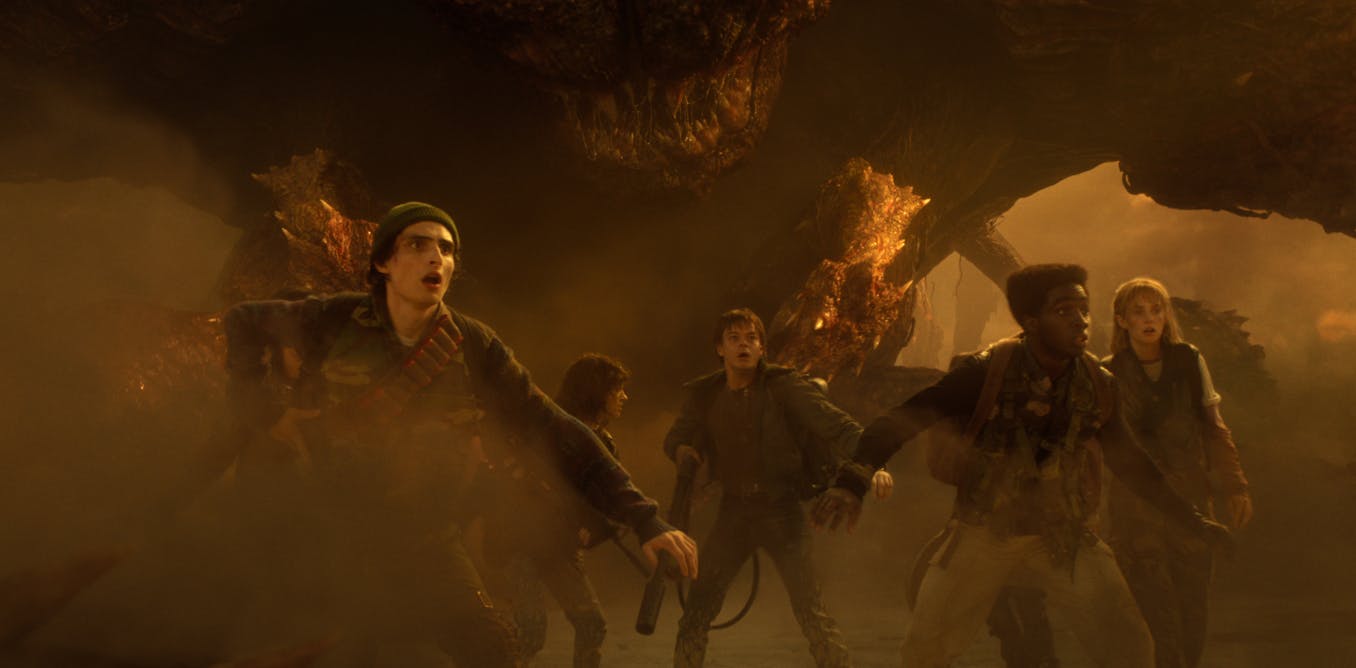I grew up in the Confederate capital—Richmond, Virginia—where Lost Cause monuments lined the main drag. For much of my life, these multiton, stone-and-steel equestrian statues of military officers and their president felt immovable. But then, in 2020, they were gone. I watched from up North as activists, galvanized and enraged by George Floyd’s murder, protested and vandalized them, ultimately causing them to topple. Ever since, I have eagerly awaited what might take their place. How, I wondered, might we represent American history anew, grappling honestly with slavery and genocide? Would a new wave of sculptures lean toward figuration? Would they be abstract? Would they be temporary or permanent? Would they honor brave survivors and heroes, or mourn tragic losses?
It’s been almost five years now, and the question has changed: it’s no longer howthemonuments will look, but whether there will be very many at all. Committee after committee has been formed and disbanded, while the plinths and on Richmond’s Monument Avenue remain empty. Committees are unable to reach consensus not only in the South. In May, both cochairs of Harvard’s Legacy of Slavery memorial committee resigned. That committee had been assembled in response to a 2022 report that detailed the many ways that Harvard leaders and benefactors profited from and advocated for slavery both on and off campus. The former committee chairs cited frustration with the University administration, who had been trying to rush the process at the expense of important community conversations.
The Harvard committee’s undoing is typical. Even before 2020, such committees, as well as myriad proposals, have regularly given way, unable to reach consensus. In 2019 artist Steve Locke canceled his proposed memorial to Boston’s slave trade, a bronze plaque to be installed at Faneuil Hall, the city’s main shopping center, which is still named for a slave trader. The city had granted the project $150,000, but faced backlash from the NAACP Boston branch, which said in a letter that the project contradicted their goal of “uplift[ing] and advanc[ing] communities of color.” The statement implied that Locke’s memorial should have been an “uplifting” monument portraying triumph, rather than a memorial commemorating tragedy. Locke told local radio station WBUR that he felt he was “being leveraged … by the NAACP to embarrass the mayor” and therefore decided to “to take my work out of it.”
Abroad, too, monument proposals have produced dissension. In 2021, after the French government solicited proposals for a slavery memorial and named a short list of artists, an organization that had partnered with (and bankrolled) the project, CM98, insisted that any memorial list the names of 200,000 slaves that France had freed in 1848. CM98 rejected proposals from the artists on the short list, by the likes of Emeka Ogboh and Julien Creuzet, even before they were completed. The planned wall of names in Paris’s Trocadéro Gardens is scheduled to open in May, though no designer has been named. Detractors point out that the form—borrowing that of Maya Lin’s Vietnam War memorial in Washington, D.C.—does not fit the content. Gaëlle Choisne, one of the competition’s finalists, told Artnet News that a list of names is a perplexing choice in addressing the history of enslavement, since so many names of formerly enslaved people belong to or were given by slaveholders. Another finalist, Adrian Piper, writing for Artforum, called the concept “a political and ethical blunder of mind-boggling proportions,” and said that it seemed to her that CM98 had already made up their mind about what the piece should look like before naming the short list of artists.
What’s become clear is that, while more and more people agree that history needs new monuments, few can agree on what form those new monuments should take.
MANY OF THE PROPOSALS that have actually been realized lean conservative, like the one to come in Paris. In 2020 the University of Virginia also took the list-of-names approach, in a memorial commemorating the enslaved laborers who built and maintained that campus in Charlottesville, designed by Thomas Jefferson. When it opened, an 80-foot-wide black stone circle created by several design firms and led by architect duo Höweler + Yoon was engraved with 578 known names, alongside placeholders for the estimated 4,000 more yet to be found, and perhaps lost to history. The structure, meant to invite gatherings of various kinds, strikes an appropriately somber tone, but its minimalist form is not at all confrontational: those who choose to are welcome to see nothing more than a circle.
Back in Richmond, a sculpture that Kehinde Wiley made in 2019 for temporary display in New York’s Times Square now sits on the campus of the Virginia Museum of Fine Arts, a few blocks from Monument Avenue. Like the projects in Paris and Charlottesville, Wiley’s equestrian statue, Rumors of War, borrows from an old form: the artist re-created the horse in a monument to J.E.B. Stuart that was erected on Monument Avenue in 1907, then put into storage in 2020. Wiley swapped the Confederate general for a young Black man wearing Nikes and a hoodie. Remaining markers of Confederate history join the sculpture on the museum’s grounds, including the Daughters of the Confederacy headquarters and the Confederate Memorial Chapel. Wiley’s intervention powerfully imagines an insurrection that might give more power to young Black men, but his equestrian statue does little to reimagine what power means or looks like. Can’t we come up with new forms?
One prominent artist tried, and his monument is by far the most controversial of this new wave. In Boston in 2023, Hank Willis Thomas unveiled a statue based on a photograph of Martin Luther King Jr. and King’s wife, Coretta Scott King, embracing. Thomas chose to show only the figures’ disembodied arms. Visitors photographed the piece from various angles, and it soon became a meme, because from more than one vantage, it appears as if the two figures are engaged in a sex act. The backlash extended beyond cheap jokes: in the Washington Post, Karen Attiah critiqued the artist’s choice to dismember the figures, a gesture she says closely echoes both King’s violent murder and “America’s compulsion to butcher King’s fight against white supremacy.” Attiah went on to detail how King’s stances against capitalism and imperialism are sidestepped when the Reverend gets framed as “a man who used feel-good, interpersonal love to overcome the racist violence of America’s institutions.”
Lists of names and one-liner figurative sculptures are the kinds of conservative art that committees serve up. Committees make decisions through compromise, which risks appealing to the lowest common denominator. And that process is antithetical to making good art, or to having any kind of real vision—both in terms of form, and in how that art can meaningfully intervene in the political realm. Rebecca Solnit wrote that “revolution takes place first in the imagination,” but anything that is consensus-approved will never be revolutionary, never mind creative or imaginative. Worse still, some powerful people on these committees may not want a revolution. Even if they can agree that slavery was bad, not everyone wants to acknowledge their ongoing benefits from slavery and genocide, or to provide the public with an image of how power might be redistributed. Throughout history, monuments have rarely involved disruption: as Erin L. Thompson writes in Smashing Statues (2022), “monuments are created and controlled by powerful people to advance their own interests.”

OURS IS NOT THE FIRST TIME the question of creating new monumental forms has arisen. In postwar Germany, a government newly bereft of the power it had so horrifically abused enlisted a group of artists and architects to propose works meant to apologize and atone, rather than honor heroes or “uplift” victims. The resulting works are known as “counter-monuments,” and most of the sculptures are abstract and not monumental at all—at least not in the traditional sense. The best-known example, the Memorial to the Murdered Jews of Europe, designed by architect Peter Eisenman with engineering firm Buro Happold and inaugurated in 2005, comprises a labyrinth of gray rectangular concrete boxes sited in the center of Berlin; when you enter it, the world around you disappears, and you are made to feel somber and alone as the weight of history seems to close in.
When the human rights lawyer Bryan Stevenson visited this monument about 10 years ago, it left a big impression on him. He felt the power of the artwork to make you see and feel the past. He thought the United States could use striking works like these. Knowing that committees wouldn’t get us there, he took matters into his own hands, privately funding a monument, museum, and sculpture park in Montgomery, Alabama, as a project of the Equal Justice Initiative (EJI), a nonprofit he founded in 1989 to provide legal representation to the wrongfully convicted. EJI has gotten more than 140 people off death row, and has worked on important legislation dealing with issues such as that in Roper v. Simmons, which in 2005 declared unconstitutional the death sentence for those under age 18 when they committed the acts of which they were convicted.
Intrigued by Stevenson’s pivot to art after having enacted such tangible kinds of change, I visited him at his office in downtown Montgomery. There, a Maya Angelou quote painted on one side of the building reads “history, despite its wrenching pain, cannot be unlived, but if faced with courage, need not be lived again.” Stevenson told me that he started thinking about monuments around 15 years ago, when he grew frustrated with “the limitations of legal work.” “I’m not sure our courts today would do something as disruptive as those major civil rights decisions,” he said. Even if they did, he continued, major legislation that does get passed isn’t necessarily enforced. He noted that for a century after Congress passed the 14th and 15th amendments—which provided formerly enslaved people citizenship and the right to vote—lynching, Jim Crow segregation, and voter suppression persisted. He realized that changing laws goes only so far. You have to change the culture too.

Taking his work outside the courtroom, Stevenson began to engage in what he calls “the narrative struggle”: in order to tell stories in any meaningful way, he’d need to circumvent the committees and layers of bureaucracy that were so effective at preventing change. So in 2018, he raised $20 million in private donations and opened the Legacy Museum in Montgomery, where exhibits narrate the history of American racism from slavery to mass incarceration, enlisting everything from historical artifacts to ghostlike holograms to dirt gathered from lynching sites. A sign greeting visitors reads slavery didn’t end in 1865, it just evolved, something Stevenson came to realize while working as a lawyer in the nation with one of the highest incarceration rates in the world, and where Black people are five times more likely to be incarcerated than white people.
That year, he also opened a monument nearby called the National Memorial for Peace and Justice: visitors descend a ramp where 805 steel rectangles hang overhead, one for each of the US counties where documented lynchings took place. The victims’ names and the dates of more than 4,000 killings are inscribed in the steel, though many names read simply unknown. Onsite, a full set of identical steel rectangles lies in the grass awaiting a home: an offer, perhaps a dare, for another state to install its own version.
Stevenson decided not to advertise his plans in advance: this would surely have invited backlash, as it had for Steve Locke and so many others. But he made sure the opening, in 2018, was a major affair, featuring concerts by Usher, Dave Matthews, and Stevie Wonder. Crowds flocked to Montgomery. “Even for the people who might not have been super enthusiastic about what we were doing … the economic consequences were quite substantial,” Stevenson told me. “Sales tax revenue went up 24%; hotels and restaurants were full.” With business thriving, skeptics could be only so upset. Eventually, he suggested to more dubious community members, “why don’t you come and see why everyone is here?”

STEVENSON GOT THE IDEA for his latest project, Freedom Monument Sculpture Park, during a trip to Lagos. Late one night, a young man there insisted on taking him to the Atlantic coast. “It was dark,” Stevenson recalled. “You couldn’t see very much, and it wasn’t a particularly beautiful beach.” As the two men stared at the moon reflected on the Atlantic, the young Nigerian turned to Stevenson and said, “I brought you here because I wanted to say I’m sorry. This is where we lost you.”
“It was the first time anyone had ever apologized to me for the history of slavery,” Stevenson told me. He was moved—and realized then how powerfully narration can change your sense of a site.
Freedom Monument Sculpture Park, which opened in Montgomery this past spring, enlists narration in the form of plaques, artworks, and historical exhibits, all encouraging visitors to see and feel the histories of slavery and genocide embedded in the landscape. At the center of the park are several original slave dwellings, brought there from Alabama’s Marengo County. These one- or two-room shacks housed, on average, six enslaved people and had, at most, one window. Stepping inside these dwellings, some of the terror that took place within is palpable.
But stepping back out on the ground, plaques remind visitors that torture happened all around. The river, visible on the horizon, was used to traffic Black and Indigenous people. The trains, audible in the background, run on rails that enslaved people built—only for enslavers to use those very tracks to ship Black people off like cargo, tearing families apart.
Outside the dwellings, a plaque informs visitors that buildings like these long outlasted slavery: “Whereas the horror of slavery was the inability to leave the plantation, sharecropping presented the inverse horror: the prospect of being evicted with no other place to live.” Plantation owners “no longer had a duty or economic self-interest to take care of the Black tenants laboring for their profit.” And so, as late as 1980, there were still descendants of enslaved people living in one such dwelling in South Carolina—with no running water, heat, or electricity.
Stevenson didn’t want the project to serve only as a space of grief and rage, but also as a monument to perseverance. So from these devastating details, your gaze lands on a panoply of beautiful, affecting sculptures created by Black and Native artists like Simone Leigh, Wangechi Mutu, and Rose B. Simpson. This one-two, from bloodshed to beauty, dilutes any sense of hopelessness a visitor might understandably feel.

For the most part, Stevenson purchased and then contextualized existing artworks rather than commissioning new ones, meaning these artists were allowed to complete their visions without pressure to please. As a result, most sculptures in the park are not site-specific—nor are the histories they address. Slavery, genocide, and lynchings transpired all across the US: some sites now house monuments; some house malls.
Simpson’s contribution to the 17-acre site is a terra-cotta sculpture of a child on the shoulders of a caretaker, a simple orb replacing the adult’s stomach. Nearby, plaques detail the displacement, genocide, and forced sterilization of Indigenous people, one of them noting that in the US, more than 90 percent of the Indigenous population was eradicated, and that 60,000 Indigenous children were taken from their families to be sent to boarding schools to be “civilized.” Here, Simpson’s sculpture depicts care as an act of survivance, a term attributed to Anishinaabe theorist Gerald Vizenor that describes a defiant and active presence, a renunciation of victimization.
Throughout the park, Stevenson sidesteps the false binary between uplift and honest reckonings that the NAACP Boston branch’s complaints suggested to Steve Locke. “I think we’ve ignored the horror and the pain and the anguish, and that has allowed us to not fully appreciate the strength, the resilience, the creativity,” Stevenson said, adding that he wants visitors to appreciate “the genius of people to find ways to not just persevere, but to create and love in the midst of sorrow.”
Still, Stevenson’s explicitness has drawn critique, as any project making a real statement is bound to do. In her 2023 book Ordinary Notes,Christina Sharpe says that “the demand is uneven” on visitors to Stevenson’s sites. Many Black visitors, she points out, are already well aware of the kinds of violence that the museum and memorial detail (she wrote the book before the sculpture park had opened). Enumerating certain facts can be merely retraumatizing. Besides, many recent acts of white supremacist terror have not involved an ignorance of history, but have taken inspiration from it (neo-Nazis, Dylann Roof). Referring to the museum’s use of holograms and immersive experiences, she concludes that “spectacle is not repair.”

SHARPE’S CRITIQUE lays bare the ways that acknowledging atrocities as horrific as slavery and genocide in merely symbolic means is all but doomed to feel unsatisfying. In St. Louis, a new public art triennial called Counterpublic offered projects that account for her critique. Like Stevenson’s EJI, Counterpublic was born of its founder’s frustration with the limits of his field. James McAnally was working as an art critic (for this magazine and others) and running independent art spaces when he started the triennial. “I kept trying to make change happen,” he told me when we got together in Brooklyn this past spring, “and it kept being insufficient…. I needed something more tangible.”
So for the second edition of Counterpublic, which took place last year, the Indigenous collective New Red Order (NRO) sited a project near Sugarloaf Mound, the oldest human-made structure in the city and the last remaining Indigenous mound in what was once known as Mound City. The top third of the mound belongs to Osage Nation, but there are two settler houses on lower tiers. One belongs to the fraternity Kappa Psi, and another to a white woman in her mid-80s named Joan Heckenberg. A highway runs alongside the mound; there, NRO has erected a billboard facing the homes that reads: got land? give it back.
The conversation with these neighbors did not begin with a demand so pointed: before the billboard went up in 2023, NRO artists and McAnally got to know Heckenberg (the fraternity had proven less open) over conversations in her kitchen that often turned to land rematriation—the group’s more feminist term for repatriation. Using a grant from the Mellon Foundation, Counterpublic offered Heckenberg $160,000 in cash to purchase her property, and told her she wouldn’t need to move out of her lifelong home immediately—or ever. As of this writing, she is still entertaining the idea, though no decision has been finalized.
In this project, the artwork has a clear target audience, and, like Freedom Monument Sculpture Park, it encourages people to see the violent histories that took palce on the land. But NRO’s intervention also has a specific material objective in which art plays an important role: “People were more willing to speak to us because it was art,” McAnally told me, adding that, compared to outright political campaigning, art can “allow more people in.”

Counterpublic was founded as “a civic exhibition that weaves contemporary art into the life of St. Louis,” per its website. The organization hadn’t intended its 2023 edition to speak to monuments at all; the curatorial research began with community conversations, and with several monuments in St. Louis having recently been removed, monuments were on everyone’s mind. “Permanent public artwork is not the primary end goal,” McAnally clarified. Although the triennial included those too, he sees sculptures as “one of many milestones along a different path.” In addition to commissioning works, the organization redistributes more than half their program funds “directly into ongoing collectives, nonprofits, and community organizations.”
For Counterpublic curator Risa Puleo, commissioning impermanent interventions like NRO’s, as opposed to monuments, means acting as a guest on the land. Another project she commissioned, Raven Chacon’s Music for 13 Paths, involved playing 13 wind chimes that he hung between trees in a U shape: the inverse of the iconic St. Louis arch, which was visible in the background. That arch commemorates the Louisiana Purchase and, by implication, the genocidal actions it facilitated. The arch is a gateway to the West, and Chacon inhabited its negative space for a performance—a moment of mourning—sited in Benton Park, so named for the Missouri senator behind the idea of Manifest Destiny.
McAnally brought together multiple voices without forcing them to agree. So elsewhere, another curator, Allison Glenn, made a compelling case for permanent monuments. Glenn has noted that landmarks crafted by notable artists can lend a neglected site cultural cachet and, with it, resources. So she enlisted David Adjaye to create his first permanent earthwork at the 25-year-old, chronically underfunded Griot Museum of Black History. The artwork, commissioned before Adjaye faced sexual assault allegations, was meant to turn the site into a destination, and also enabled Counterpublic to fund a full-time fellow to work on conservation initiatives at the museum.
“When you’re invited to think about a place, you’re immediately thinking in all these different time scales,” McAnally told me. “You’re thinking about what the narrative of that site has been, historically; what it hasn’t been. About what a community might be ready to accept, and how it might resonate for an unknown period of time.”
If EJI demonstrates why political and narrative struggles need each other, Counterpublic shows how the two can work hand-in-hand. These are important steps forward at a time when it feels like even activism often falls short of producing any real change. As Astra Taylor and Leah Hunt-Hendrix wrote in the Guardian recently, “the 21st century has witnessed the biggest protests and the most popular petitions in history, yet they have produced comparatively small effects.” Today, “activism” often entails making one’s politics visible by signing petitions, showing up at rallies, and posting on social media, with many struggling to organize their upset toward a tangible goal. This outsize emphasis on visibility and awareness is exacerbated by the feeling that we are powerless to change much anyway, never mind with our art.
Still, Solnit’s words ring true: “revolution takes place first in the imagination.” And we aren’t lacking for visionary artists capable of finding formal solutions to the problem of narrating American history. More rare are organizers—like Stevenson and McAnally—with the patience and diplomacy to help them realize their ambitious visions. The pedestals of Richmond’s Monument Avenue sit empty still, awaiting perhaps not a grand new narrative of history, but a medley
of voices instead.

The post “Confederate and Colonialist Monuments Are Finally Being Toppled, But Few Can Agree on What Goes in Their Place” by Emily Watlington was published on 10/02/2024 by www.artnews.com






























![Animals vs. Water: Hilarious Moments! 😂 [2025 Edition] – Video Animals vs. Water: Hilarious Moments! 😂 [2025 Edition] – Video](https://i.ytimg.com/vi/F1_AvAuQI5M/maxresdefault.jpg)






Leave a Reply